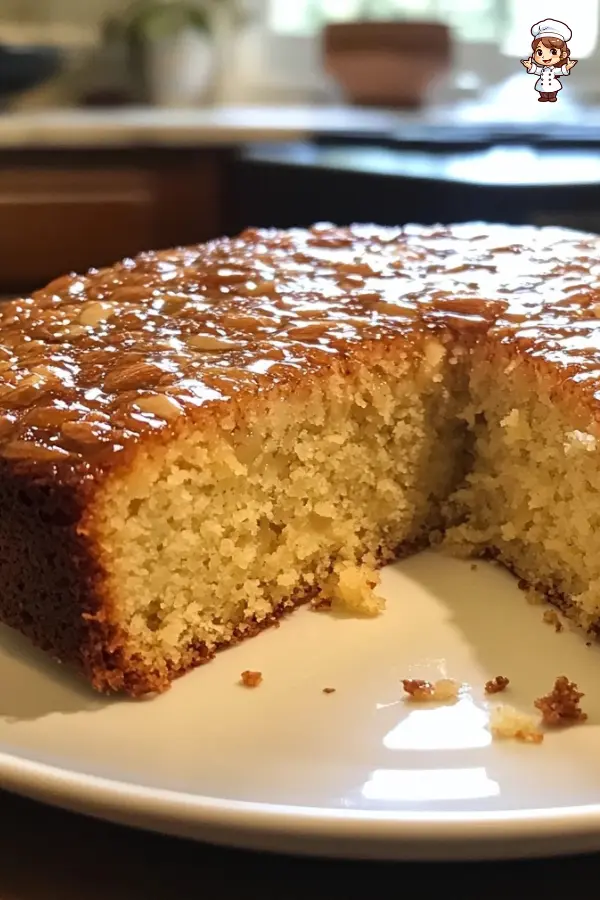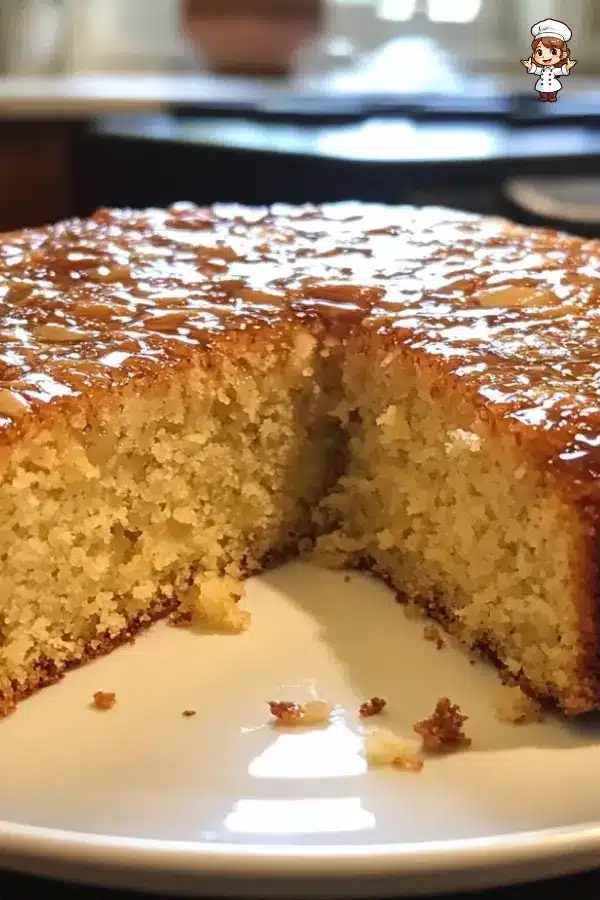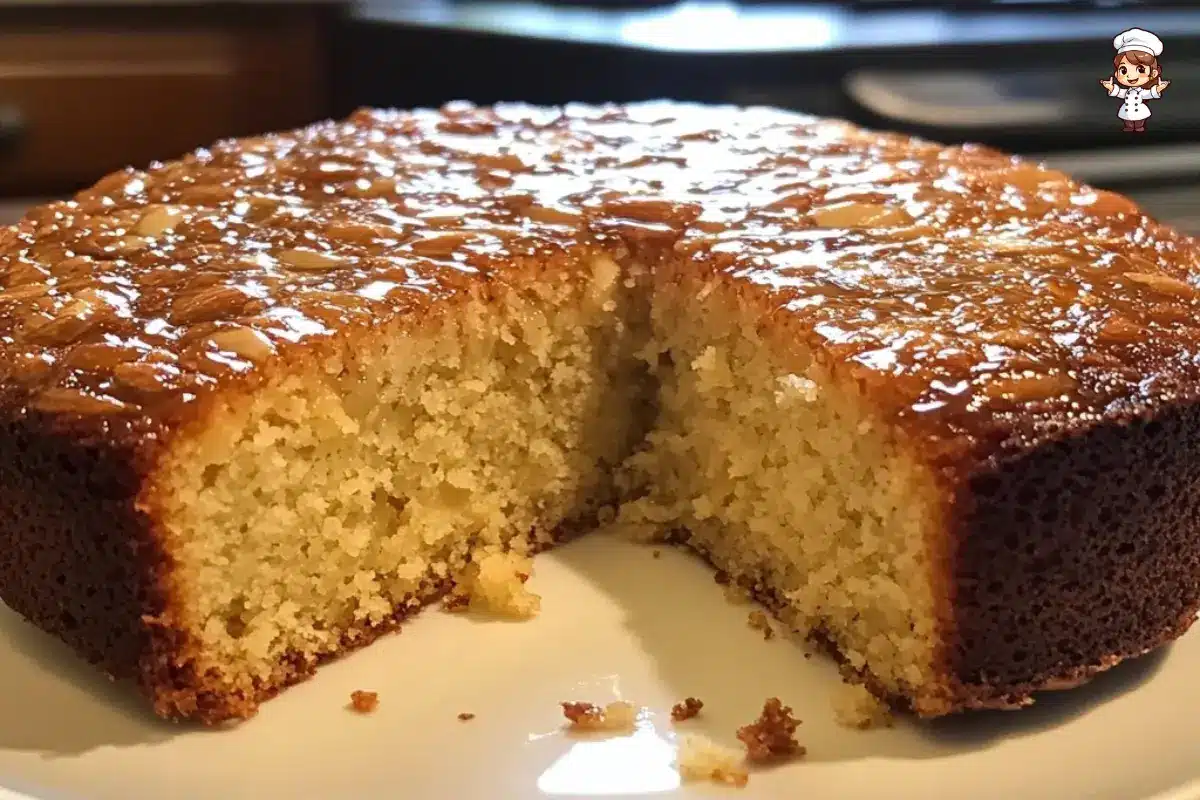If you’ve ever wondered about the magical fusion of spices, textures, and flavors in Persian desserts, then the Persian Cardamom Cake will captivate your taste buds. This cake perfectly represents Middle Eastern baking traditions and a classic blend of aromatic Cardamom, moist almond flour, and sweet floral notes. Whether you want to surprise guests with a new dessert or simply indulge in something different, this cake checks all the boxes. In this article, we’ll dive into everything you need to know—from the cake’s origins and ingredients to variations and serving tips. So, let’s begin our flavorful journey!
Key Ingredients for Persian Cardamom Cake

Cardamom: The Fragrant Spice
Regarding Persian Cardamom Cake, Cardamom is undeniably the star of the show. Known for its distinctive, aromatic flavor, this spice is a hallmark of Persian baking. It’s warm, slightly spicy, and carries a hint of citrus that instantly elevates the cake’s taste profile. What’s more, it has an enchanting fragrance that fills your kitchen as soon as you mix it with other ingredients.
For centuries, Cardamom has been a vital ingredient in Middle Eastern and Persian cuisine. Not only does it bring a unique flavor to cakes, but it also has medicinal properties. So, aside from making your Persian Cardamom Cake delicious, it’s also a spice that’s been cherished for its health benefits. You can use ground cardamom in the cake batter or grind your own cardamom pods fresh before baking for an even more intense flavor. Either way, you’ll add an authentic touch that brings a piece of Persian culture into your home.
Almond Flour and Its Role in Gluten-Free Baking
Another key ingredient in Persian Cardamom Cake is almond flour, which ensures the cake remains gluten-free and contributes a rich, moist texture. Unlike regular flour, almond flour is made from finely ground almonds, giving it a slightly nutty flavor. This makes the cake denser and helps it stay fresh and moist longer, perfect for those sensitive to gluten or just prefer a more flavorful cake base.
Using almond flour also ensures that the Persian Cardamom Cake has a unique crumbly texture that can’t be achieved with traditional flour. It’s the perfect foundation for the bold flavors of Cardamom and rosewater, which come together beautifully to create a balanced dessert. If you’ve never baked with almond flour before, you’re in for a treat—this cake will open your eyes to a whole new world of gluten-free possibilities.
Step-by-Step Recipe for Persian Cardamom Cake

Preparation: How to Set Up for Baking
Before you begin the delightful process of making Persian Cardamom Cake, gather your ingredients and prepare your baking tools. First, preheat your oven to 175°C (350°F), ensuring that it’s fully heated before you start. Grease and line a 9-inch (23cm) round cake pan with parchment paper. This will ensure that your cake doesn’t stick and that it comes out perfectly shaped.
Next, ensure all your ingredients are at room temperature—eggs, yogurt, and other wet ingredients. This simple step can help the batter merge more smoothly, ensuring a light and airy texture. Once everything is prepped, you’re ready to start mixing!
Making the Batter: Mixing Wet and Dry Ingredients
Now, the fun begins! In a large bowl, whisk together your dry ingredients: almond flour, baking powder, salt, and Cardamom. The Cardamom is the key here, so don’t skimp on it. If you’re using ground cardamom, it should be a finely powdered form to blend well into the dry mix.
Whisk your eggs and granulated sugar together in a separate bowl until the mixture becomes pale and fluffy. This step is essential for creating a light texture in your Persian Cardamom Cake. Then, stir in the sunflower oil (or melted butter), vanilla extract, and Greek yogurt. These ingredients add richness and moisture to your cake.
Now, slowly fold the dry ingredients into the wet ingredients. Be gentle during this step—mix just until combined. Over-mixing can lead to a dense cake, and you want your Persian Cardamom Cake to be light and fluffy.
Baking the Cake: Tips for Perfect Texture
Once the batter is ready, pour it into your prepared cake pan and smooth the top. Place the pan in the oven and bake for 25–30 minutes, or until the cake is golden brown. You can test the doneness by inserting a toothpick into the center—if it comes out clean, it’s time to remove the cake.
As the cake bakes, you’ll smell the rich fragrance of Cardamom and almond filling the air. It’s one of the most satisfying moments in baking. Once baked, allow the cake to cool in the pan for 10 minutes before transferring it to a wire rack to cool completely.
Flavor Profile of Persian Cardamom Cake
Aromatic Spices: How Cardamom and Rosewater Transform the Cake
The magic of Persian Cardamom Cake lies in the layers of flavor that come from its ingredients. The standout is, of course, the Cardamom. This aromatic spice doesn’t just add a hint of sweetness; it infuses the cake with warmth and complexity that make every bite a little more exciting. It’s not overpowering but rather complements the cake’s texture and sweetness perfectly.
Adding rosewater, as many traditional recipes do, brings a soft floral note that balances the Cardamom. The combination of Cardamom and rosewater is a hallmark of many Persian desserts. These flavors don’t compete—they work together to create something truly unique. It’s a cake that feels comforting yet refined, ideal for any occasion, whether casual tea or a special celebration.
Balancing Sweetness and Spice
What sets the Persian Cardamom Cake apart is how the sweetness is perfectly balanced with the boldness of the spices. Unlike many Western cakes that are heavily sweet, this Persian version allows the flavors of Cardamom, almond flour, and even rosewater to shine. The cake has just the right amount of sweetness—enough to satisfy your sweet tooth but not so much that it overpowers the spices. This delicate balance is one of the reasons why it’s so widely loved across cultures.
The result is a cake that feels rich yet not overwhelming, with every bite offering a wonderful dance of flavors on your palate. It’s a great choice for those who appreciate more subtle and complex flavor profiles.
Variations of Persian Cardamom Cake
Persian Love Cake vs. Cardamom Cake
You might come across another variation known as the Persian Love Cake. While both cakes share a similar flavor base, the Persian Love Cake is often a bit richer and more decadent. It typically uses Cardamom and rosewater, with saffron and sometimes a touch of citrus. While the Persian Cardamom Cake is already moist from almond flour, the Love Cake’s texture is generally more dense and buttery.
However, the core similarity is the use of Cardamom, which ties both cakes together with their warm, aromatic flavors. The Persian Love Cake is perfect for more indulgent occasions, while the simpler Persian Cardamom Cake is ideal for lighter, everyday enjoyment.
Gluten-Free and Vegan Modifications
One of the best things about the Persian Cardamom Cake is its adaptability. If you’re following a gluten-free or vegan diet, modifying the recipe to fit your needs is easy. To make the cake vegan, simply swap the eggs with a flaxseed or chia egg, and use dairy-free yogurt instead of Greek yogurt. For a gluten-free version, stick with the almond flour, which is already a key ingredient, and ensure that the baking powder is also gluten-free.
These simple substitutions won’t compromise the cake’s flavors. The Persian Cardamom Cake is naturally suited for these dietary restrictions, as the almond flour provides a moist and rich texture, while the Cardamom and rosewater maintain their aromatic charm. It’s a versatile recipe that caters to a wide range of diets without losing the integrity of the original Persian-inspired flavors.
For more spiced cake inspiration, browse Recipes Louna’s blog collection—it’s full of cozy dessert gems!
Serving and Pairing Suggestions
Best Occasions to Serve Persian Cardamom Cake
The Persian Cardamom Cake is a dessert that works beautifully for a variety of occasions. Whether you’re hosting a casual afternoon tea, a dinner party, or a special holiday gathering, this cake fits the bill perfectly. Its delicate flavor profile makes it an excellent choice for those who enjoy more subtle, aromatic desserts.
This cake pairs wonderfully with coffee or Persian tea (a blend of black tea with Cardamom). It’s a lovely way to end a meal or enjoy a sweet afternoon snack. Since it’s also gluten-free, it’s a great dessert option for those with dietary restrictions, making it a versatile treat to offer guests.
To make the cake feel even more special, try serving it with a dollop of whipped cream or top it with a few sliced almonds or pistachios for added texture. This enhances the cake’s presentation and adds a bit of crunch that complements the moist cake.
What to Pair with Persian Cardamom Cake
The flavor complexity of Persian Cardamom Cake means it pairs beautifully with various beverages. A nice hot cup of chai, which shares some of the same warming spices as Cardamom, can elevate the cake’s aroma and flavor. If you prefer a more refreshing drink, serve it with a lightly brewed green tea or a tangy citrus-infused beverage. These drinks contrast the cake’s sweetness and floral notes while balancing the flavors.
For a special touch, serve the cake with rose petal jam or fresh berries, adding a burst of color and freshness. The combination of soft cake and refreshing sides is a delightful contrast that’s sure to please any palate.
FAQs About Persian Cardamom Cake
Can I use other nuts besides pistachios?
Yes, you can easily swap pistachios for other nuts if you prefer. Almonds would be an excellent substitute, complementing the almond flour used in the cake, or you can use walnuts for a bit of extra texture and flavor. Just chop the nuts into small pieces to blend well with the cake’s crumb.
How long can I store Persian Cardamom Cake?
Persian Cardamom Cake can be stored for up to 3 days at room temperature, thanks to the moisture from almond flour and yogurt. If you want to keep it fresh longer, store it in the refrigerator for up to a week. Cover it with plastic wrap or place it in an airtight container to maintain its softness.
Can I make Persian Cardamom Cake ahead of time?
Absolutely! Making this cake a day or two ahead of time allows the flavors to develop further. It’s even possible to freeze the cake—just wrap it tightly in plastic wrap and then foil before freezing. When you’re ready to serve, let it thaw at room temperature for a few hours.
What is the difference between Persian Cardamom Cake and Persian Love Cake?
While both cakes share similar ingredients, like Cardamom and rosewater, Persian Love Cake is typically denser and richer, often using more butter and sometimes incorporating saffron or citrus for added complexity. On the other hand, Persian Cardamom Cake is lighter, with the almond flour providing a moist yet soft texture, perfect for those seeking a lighter dessert option.
Print
Persian Almond Cardamom Cake (Gluten-Free)
- Total Time: 45 minutes
- Yield: 8 servings 1x
- Diet: Gluten Free
Description
This Persian Cardamom Cake is a fragrant and moist gluten-free dessert that combines the rich flavors of almond flour and cardamom. Infused with a hint of rosewater and topped with optional pistachios, this cake brings a beautiful balance of spice and sweetness. It’s the perfect treat for any occasion, whether it’s an afternoon tea or a celebratory event. Easy to make and full of flavor, this cake is a wonderful way to explore Persian-inspired baking.
Ingredients
- 200g (2 cups) almond flour
- 1 tsp baking powder (gluten-free)
- 1/4 tsp salt
- 1/2 tsp ground cardamom
- 4 large eggs
- 100g (1/2 cup) granulated sugar
- 60ml (1/4 cup) sunflower oil or melted butter
- 1 tsp vanilla extract
- 120ml (1/2 cup) full-fat Greek yogurt or dairy-free yogurt
- Optional: 1 tbsp rosewater or orange blossom water for a floral note
- For the Glaze (optional):
- 60g (1/4 cup) powdered sugar
- 1 tbsp water
- 1/2 tsp vanilla extract
Instructions
- Preheat your oven to 175°C (350°F). Grease and line a 9-inch round cake pan with parchment paper.
- In a large bowl, whisk together almond flour, baking powder, salt, and ground cardamom.
- In a separate bowl, whisk the eggs and granulated sugar until the mixture becomes pale and fluffy.
- Stir in the sunflower oil (or melted butter), vanilla extract, and Greek yogurt (or dairy-free yogurt).
- Gradually fold the dry ingredients into the wet ingredients until fully combined.
- Pour the batter into the prepared pan and smooth the top.
- Bake for 25–30 minutes, or until the cake is golden and a toothpick inserted into the center comes out clean.
- Let the cake cool in the pan for 10 minutes, then transfer to a wire rack to cool completely.
- For the optional glaze: Whisk together powdered sugar, water, and vanilla extract until smooth. Drizzle over the cooled cake if desired.
Latest Amazon Finds
Notes
- For an even more authentic flavor, try adding 1 tablespoon of rosewater to the batter. If you prefer a citrusy twist, orange blossom water is an excellent substitute.
- The Persian Cardamom Cake can be stored at room temperature for up to 3 days, or refrigerated for up to a week.
- You can also freeze the cake for up to a month—simply wrap it tightly in plastic wrap and foil, and thaw before serving.
- Prep Time: 15 minutes
- Cook Time: 30 minutes
- Category: Dessert, Cake
- Method: Baking
- Cuisine: Persian
Nutrition
- Serving Size: 1 slice
- Calories: 280 kcal
- Sugar: 10g
- Sodium: 140mg
- Fat: 20g
- Saturated Fat: 2g
- Unsaturated Fat: 18g
- Trans Fat: 0g
- Carbohydrates: 18g
- Fiber: 2g
- Protein: 6g
- Cholesterol: 55mg
Keywords: Persian cardamom cake, almond flour cake, gluten-free cardamom cake, Persian dessert, rosewater cake, Middle Eastern dessert, gluten-free cake recipe



